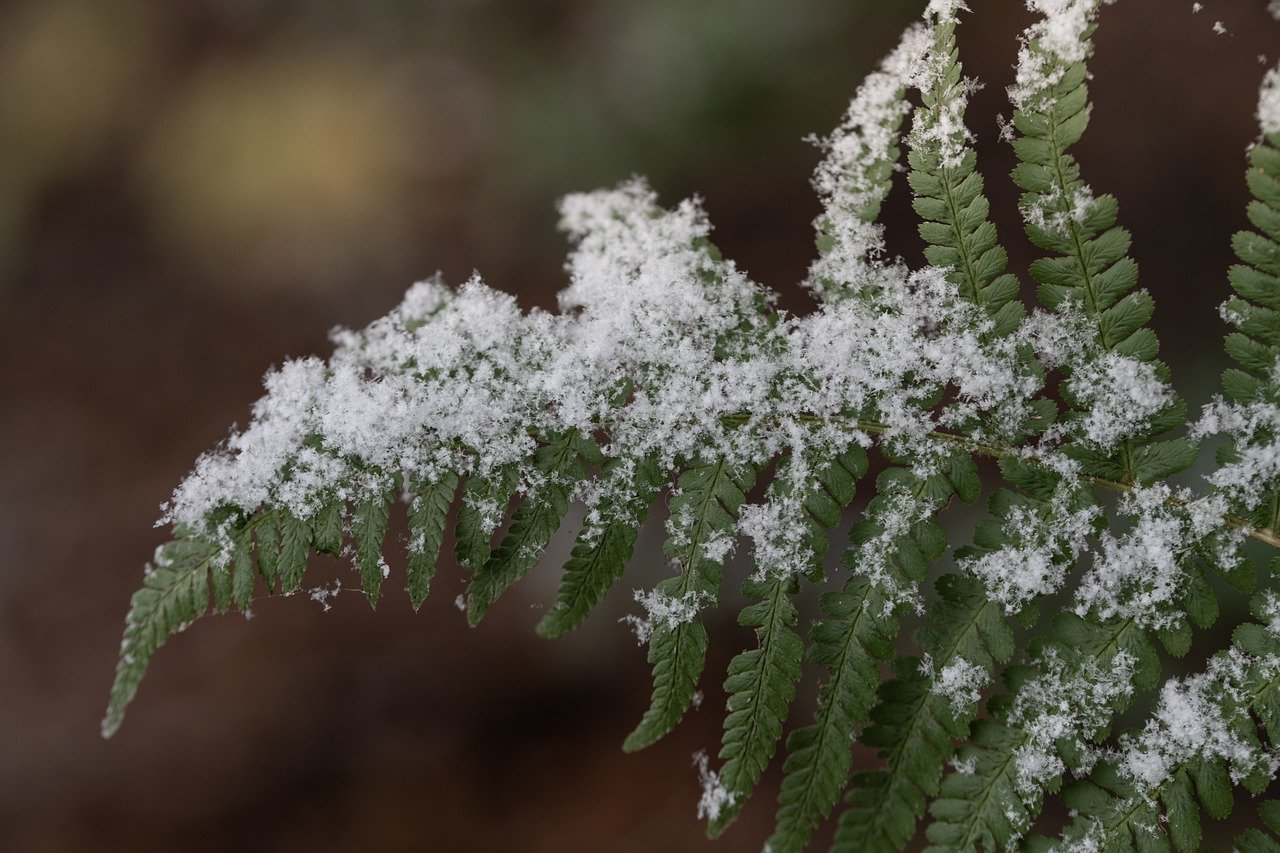Ferns are fascinating and ancient plants that have been gracing our planet for millions of years. Their delicate fronds and lush greenery make them a popular choice for gardens and indoor spaces. However, one common question that fern enthusiasts often ask is, “Can ferns survive winter?” The answer isn’t a simple yes or no but depends on various factors, including the fern species, climate, and how you care for them during the colder months.
In this comprehensive guide, we will delve into the world of ferns and explore their ability to survive winter. We will discuss the types of ferns that are more likely to withstand cold temperatures, the challenges they face during winter, and the best practices for overwintering ferns, whether you’re growing them indoors or outdoors. By the end of this article, you’ll have a thorough understanding of how to help your beloved ferns thrive throughout the winter season.
Understanding Ferns: A Brief Overview
Before we dive into the topic of overwintering ferns, let’s take a moment to understand these unique plants. Ferns belong to the division Pteridophyta and are known for their distinct appearance, characterized by feather-like fronds or leaves. Unlike flowering plants, ferns reproduce via spores, not seeds. They are a diverse group of plants, with thousands of species worldwide, ranging from small, delicate ferns to towering tree ferns.
Ferns are typically found in various ecosystems, from tropical rainforests to temperate woodlands and even deserts. Many fern species are well-suited to shady and moist environments, and they play crucial roles in forest ecosystems as soil stabilizers and habitat providers for various wildlife.
When it comes to gardening and indoor decoration, ferns have gained popularity due to their graceful foliage and low-maintenance requirements. However, their adaptability to winter conditions varies depending on the species, making it important to know which ferns are more winter-hardy and which may require extra care during the colder months.
Types of Ferns: Winter Survival Abilities
To answer the question, “Can ferns survive winter?” we need to consider the resilience of different fern species to cold temperatures. While some ferns are hardy and can endure frosty conditions, others are more delicate and may struggle when the temperature drops. Here are some common fern species categorized based on their winter survival abilities:
- Hardy Ferns:
- Christmas Fern (Polystichum acrostichoides)
- Autumn Fern (Dryopteris erythrosora)
- Ostrich Fern (Matteuccia struthiopteris)
- Lady Fern (Athyrium filix-femina)
- Semi-Hardy Ferns:
- Maidenhair Fern (Adiantum spp.)
- Wood Fern (Dryopteris spp.)
- Cinnamon Fern (Osmundastrum cinnamomeum)
- Japanese Painted Fern (Athyrium niponicum)
- Tender Ferns:
- Boston Fern (Nephrolepis exaltata)
- Kimberly Queen Fern (Nephrolepis obliterata)
- Staghorn Fern (Platycerium spp.)
- Bird’s Nest Fern (Asplenium nidus)
Hardy ferns are the most winter-resistant, with some species remaining green and healthy even in freezing temperatures. Semi-hardy ferns can tolerate light frosts but may require protection during harsh winters. Tender ferns are the least winter-tolerant and are best grown as houseplants in colder regions or brought indoors during the winter months.
Overwintering Ferns Outdoors
If you have hardy or semi-hardy ferns growing in your garden, it’s essential to take steps to ensure their survival during the winter. Here are some tips for overwintering ferns outdoors:
- Mulch: Apply a layer of organic mulch, such as shredded leaves or straw, around the base of your ferns. This will help insulate the soil and protect the roots from freezing temperatures.
- Sheltered Location: Plant your ferns in a sheltered location that provides some protection from harsh winds and direct exposure to winter sun. Ferns are naturally found in shaded areas, so replicating these conditions will help them survive the winter.
- Watering: Reduce the frequency of watering as winter approaches. Ferns are less active during the colder months and require less moisture. However, make sure the soil doesn’t completely dry out.
- Protective Barriers: For particularly cold winters, consider erecting protective barriers around your ferns, such as burlap or garden fabric. This will shield them from extreme cold and drying winds.
- Pruning: In late fall or early winter, trim any dead or damaged fronds from your ferns. This will help the plant conserve energy and maintain a neater appearance.
- Snow Cover: Snow can provide natural insulation for ferns. If your region experiences heavy snowfall, leave the snow in place to protect your ferns. Just be cautious not to pile too much snow on top of them, as this can damage the fronds.
Overwintering Ferns Indoors
For tender ferns or fern enthusiasts in regions with harsh winters, the best option may be to bring your ferns indoors for the winter. Here’s how to do it:
- Timing: Start the process of bringing your ferns indoors before the first frost. It’s essential to acclimate them gradually to the indoor conditions to prevent shock.
- Select a Suitable Location: Place your ferns in a well-lit area with indirect sunlight. A room with a north-facing window or an east-facing window with filtered light is ideal. Avoid placing them near heating vents or radiators, as excessive heat can dry out the air and harm your ferns.
- Container Choice: Ensure that your indoor ferns are planted in pots with good drainage. Use a well-draining potting mix to prevent waterlogging.
- Humidity: Ferns thrive in high humidity, which can be a challenge indoors during the winter when central heating systems can dry out the air. To increase humidity, you can:
- Group your ferns together to create a microclimate of higher humidity.
- Use a humidity tray filled with water and pebbles under the pots.
- Mist your ferns with water regularly.
- Use a room humidifier to maintain optimal humidity levels.
- Watering: Keep the soil consistently moist but not waterlogged. Check the soil’s moisture level by inserting your finger into the top inch (2.5 cm) of soil. If it feels dry, it’s time to water.
- Fertilization: Reduce fertilization during the winter months. Ferns are not heavy feeders in the colder season, so a diluted, balanced liquid fertilizer every 6-8 weeks should suffice.
- Pest Control: Inspect your indoor ferns regularly for pests like mealybugs and spider mites. If you notice any infestations, treat them promptly with appropriate methods.
- Pruning and Grooming: Trim dead or yellowing fronds to encourage healthy growth and maintain the plant’s appearance.
- Monitoring: Pay attention to your ferns’ response to indoor conditions. If you notice any signs of stress, such as browning fronds or stunted growth, adjust their care accordingly.
Ferns that are brought indoors for the winter can be reintroduced to the outdoor garden once the threat of frost has passed in the spring. Gradually acclimate them to outdoor conditions by placing them in a shaded spot for a few days before transplanting them to their permanent location.
Common Winter Challenges for Ferns
Ferns, like any other plants, face specific challenges during the winter season. Understanding these challenges can help you take appropriate steps to ensure your ferns’ survival and thriving. Here are some common winter issues for ferns:
- Freezing Temperatures: Cold temperatures can damage fern fronds and roots. Hardy ferns are more resilient to freezing temperatures, but even they can benefit from some winter protection.
- Drying Winds: Strong winter winds can desiccate fern fronds and soil, leading to dehydration and stress for the plants. Sheltered locations and protective barriers can help mitigate this issue.
- Frost Heaving: In regions with freeze-thaw cycles, ferns may be subject to frost heaving, where the soil alternately freezes and thaws. This can uproot or damage ferns. Mulching can prevent frost heaving.
- Lack of Sunlight: Reduced sunlight during the winter can affect fern growth and overall health. Proper positioning and supplemental lighting for indoor ferns can address this challenge.
- Low Humidity: Indoor ferns often struggle with low humidity levels during the winter months, which can result in dry and crispy fronds. Humidity-enhancing measures are crucial for their well-being.
- Pests and Diseases: Some pests and diseases can become more problematic during the winter when indoor conditions create favorable environments for them. Regular monitoring and appropriate treatment are essential.
- Overwatering: While it’s important to keep the soil consistently moist for indoor ferns, overwatering can lead to root rot. Always check the soil’s moisture level before watering.
Winter Fern Care Tips
To help your ferns thrive during the winter, here are some additional care tips:
- Monitor Temperature: Keep an eye on the indoor temperature where you’ve placed your ferns. Aim for a consistent temperature range between 60°F to 75°F (15°C to 24°C).
- Insulate Outdoor Ferns: Use frost blankets or burlap to insulate outdoor ferns during cold snaps. Remove the coverings during milder periods to allow ventilation.
- Watering Schedule: Adjust your watering schedule based on environmental conditions. In indoor settings, ferns may require less frequent watering due to lower light levels and reduced evaporation.
- Avoid Overcrowding: Give your indoor ferns adequate space to allow air circulation and prevent the spread of pests and diseases.
- Gentle Pruning: Trim fronds and foliage gently to avoid damaging the plant. Use clean and sharp pruners to make clean cuts.
- Fertilize Sparingly: Reduce fertilization during the winter. Over-fertilizing can lead to salt build-up in the soil, which can harm your ferns.
Conclusion
Ferns, with their captivating beauty and unique characteristics, can indeed survive the winter with proper care and attention. Whether you have hardy ferns thriving in your outdoor garden or delicate ferns gracing your indoor space, understanding their winter needs and challenges is crucial to ensuring their well-being.
By selecting appropriate fern species for your climate, providing winter protection when needed, and adjusting care routines based on seasonal changes, you can enjoy the lush greenery and graceful fronds of ferns year-round. With the knowledge gained from this comprehensive guide, you are well-equipped to help your ferns not only survive but thrive during the winter season. So, go ahead and embrace the charm of ferns, even when the snow falls and the cold winds blow.








